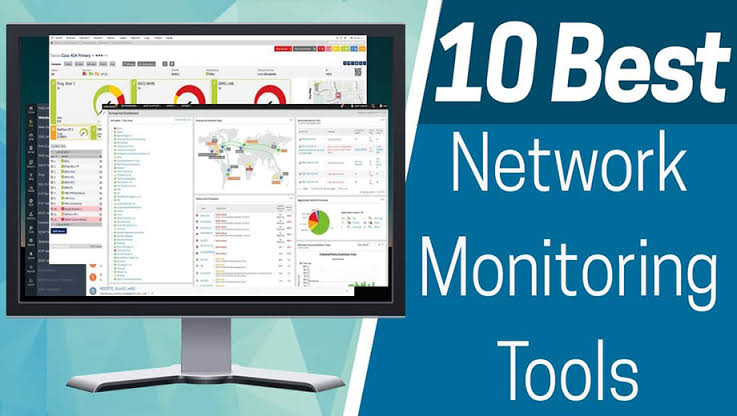In today’s connected world, network monitoring isn’t just about uptime—it’s about visibility, automation, and proactive problem resolution. Whether you're running a small business or a global data center, having the right tool in place can dramatically reduce downtime, improve user experience, and lower operational costs.
Network performance is critical to modern business operations. From remote work and cloud computing to hybrid infrastructure and IoT devices, maintaining network health and uptime has never been more essential. In 2025, organizations of all sizes are relying heavily on network monitoring tools that offer real-time analytics, threat detection, traffic visibility, and automation features to proactively manage infrastructure and avoid costly downtime. Here’s a look at the top 10 network monitoring tools making a significant impact this year.
10. Zabbix
Zabbix continues to be a powerful and reliable open-source tool for real-time network monitoring. It is especially popular among enterprises looking for a customizable, cost-effective solution. Zabbix supports SNMP, IPMI, and agent-based monitoring, and it provides extensive visualization capabilities such as heat maps, trend predictions, and intelligent alerting. As of 2025, its new AI-powered anomaly detection engine makes it even more effective in preempting outages and pinpointing root causes across distributed systems.
9. ManageEngine OpManager
OpManager by ManageEngine is a comprehensive and user-friendly network monitoring platform ideal for mid-sized and large enterprises. It monitors routers, switches, firewalls, servers, and virtual machines with real-time data and customizable dashboards. Its 2025 release introduced predictive analytics, bandwidth optimization insights, and tighter integrations with ITSM platforms like ServiceNow. It’s widely praised for its intuitive UI and strong reporting features, especially in hybrid cloud environments.
8. WhatsUp Gold
WhatsUp Gold remains a favorite for IT teams that value simplicity and depth. It provides up/down status monitoring, performance metrics, and log management, all presented in a clear graphical interface. In 2025, its integration with Microsoft Azure and AWS has improved significantly, and the tool now offers deeper flow-based traffic analysis. WhatsUp Gold is especially beneficial for organizations that want a fast, on-premise solution with minimal setup.
7. Auvik
Auvik stands out for its cloud-based deployment model and strong focus on network visibility and automation. It offers fast network discovery, configuration backup, real-time alerts, and traffic flow analysis—all within a sleek and modern UI. In 2025, Auvik introduced AI-assisted root cause identification, helping IT admins troubleshoot complex issues more quickly. It’s a top pick for managed service providers (MSPs) and multi-location businesses due to its ease of scaling and remote management capabilities.
6. LogicMonitor
LogicMonitor is a full-stack observability platform that goes beyond just network performance. It includes support for cloud infrastructure, on-premise hardware, applications, and logs, all in one place. The tool’s AIOps engine in 2025 makes it particularly attractive, offering automated incident response, anomaly detection, and intelligent thresholding. Its ability to correlate network issues with application performance makes LogicMonitor a powerful solution for enterprise IT teams aiming for end-to-end visibility.
5. PRTG Network Monitor
PRTG by Paessler continues to dominate the SMB and mid-market space due to its powerful yet accessible monitoring features. With over 300 built-in sensor types, it can track bandwidth usage, CPU load, memory, disk, and more. In 2025, PRTG added enhanced cloud integrations and improved its mobile app experience. Its drag-and-drop dashboard and map builder make it easy to visualize complex networks in real time, and the licensing remains flexible for organizations scaling their infrastructure.
4. Datadog Network Performance Monitoring
Datadog’s network performance monitoring module is part of a broader observability suite that includes infrastructure, logs, traces, and security. It’s widely used by DevOps teams, especially in cloud-native environments. In 2025, Datadog has extended its support for zero-trust architecture monitoring and Kubernetes-based networks. Its automatic dependency mapping and powerful alert system ensure that users can identify problems fast—whether it’s a slow-loading API or a bottleneck between microservices.
3. SolarWinds Network Performance Monitor (NPM)
Despite past reputational challenges, SolarWinds has bounced back with a focus on transparency and product innovation. NPM is still one of the most robust tools available for monitoring complex network environments. It offers advanced NetFlow traffic analysis, dynamic network topology maps, and intelligent baseline alerts. In 2025, SolarWinds introduced AI-driven traffic behavior analytics and real-time vulnerability detection, making NPM a reliable choice for large organizations with high security and compliance demands.
2. ThousandEyes by Cisco
ThousandEyes provides deep internet and cloud visibility by monitoring the user experience from various points across the network. Acquired by Cisco, it integrates well with existing Cisco devices and extends visibility beyond the corporate perimeter. In 2025, ThousandEyes added synthetic transaction testing, AI-based outage prediction, and automated incident correlation. Its ability to trace external dependencies—such as third-party SaaS services or regional ISPs—makes it an indispensable tool for enterprises reliant on global connectivity.
1. Nagios XI
Nagios XI continues to be the gold standard in network monitoring for organizations that need deep control and customization. It supports a wide array of plugins and integrations, and its alerting system is both powerful and adaptable. With a strong user community and robust documentation, Nagios remains a reliable choice for complex infrastructures. The 2025 version introduced cloud-native monitoring capabilities, Kubernetes support, and a new predictive monitoring feature powered by machine learning. It’s the top choice for system administrators who want precision, flexibility, and total infrastructure awareness.
